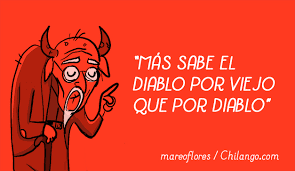Time for "Just Mercy"
Alongside Michelle Alexander's The New Jim Crow: Incarceration in the Age of Colorblindness and john a. powell's Racing to Justice: Transforming Our Conceptions of Self and Other to Build an Inclusive Society, another extraordinary book on race and the criminal justice system is Just Mercy: A Story of Justice and Redemption by Bryan Stevenson.
A public-interest lawyer who has dedicated his career to helping the poor and the incarcerated, especially the condemned, Bryan Stevenson is the founder and executive director of the Equal Justice Initiative, an Alabama-based group that has won major legal challenges eliminating excessive and unfair sentencing, exonerating innocent prisoners on death row, confronting abuse of the incarcerated and the mentally ill, and aiding children prosecuted as adults.
In an historic win for EJI, the U.S. Supreme Court ruled in Graham v. Florida, 2010, that mandatory life-without-parole sentences for all children 17 or younger are unconstitutional. Stevenson, a graduate of the Harvard Law School and the Harvard School of Government, has been awarded 14 honorary doctorate degrees. Fighting poverty and challenging racial discrimination in the criminal justice system, Stevenson has been awarded 16 honorary doctorate degrees as well as a MacArthur Genius Grant in 1995.
Stevenson writes smoothly, gracefully, recounting stories from his first meeting as a law student with a man condemned to death. In more than 30 years since that encounter, Stevenson has persevered and occasionally won, against the odds, justice for his clients. The writing, imbued with biblical terms, incorporates and echoes the old spirituals and hymns. Several chapters make direct allusion: "Higher Ground," "The Old Rugged Cross," "I'll Fly Away," and "Song of Sorrow."
That first encounter in 1983 with Henry, the condemned prisoner, began a change in Stevenson:
I had come into the prison with such anxiety and fear about his willingness to tolerate my inadequacy. I didn't expect him to be compassionate or generous. I had no right to expect anything from a condemned man on death row. Yet he gave me an astonishing measure of his humanity. In that moment, Henry altered something in my understanding of human potential, redemption, and hopefulness. (p. 12)The experience also prompted an essential hermeneutic for Stevenson; his grandmother would tell him: "You can't understand most of the importance things from a distance, Bryan. You have to get close" (p. 14). Stevenson has spent his life getting close to those convicted of heinous crimes and has important understandings to share with us.
Anyone who has more than 30 years fighting for justice has a spirit of hope that I want to know more closely. In his public-speaking, Stevenson addresses not only the convicted and the courts, but also to churches and the community, the loved ones of the condemned. While he recounts how he has found hope in those others, I have no doubt that he is also a bearer of hope to those who need it. He mentions a fondness for quoting, on hope, Václav Havel, a Czech writer, philosopher, dissident, and first president of the Czech Republic. He describes that hope as "The kind of hope that creates a willingness to position oneself in a hopeless place and be a witness, that allows one to believe in a better future, even in the face of abusive power. That kind of hope makes one strong" (p. 219). Stevenson gives witness to a resilient, enduring hope that emerges from broken places.
In chapter fifteen, the penultimate chapter, Stevenson explores that brokenness more explicitly. Here, he cites his experience as well as Dr. Paul Farmer, a physician who has worked among some of the poorest on the planet, and Thomas Merton, the Trappist monk whose writings inspired so many. Stevenson concludes:
We have a choice. We can embrace our humanness, which means embracing our broken natures and the compassion that remains our best hope for healing. Or we can deny our brokenness, forswear compassion, and, as a result, deny our own humanity. (p. 289)Here, my hard-fought experience suggests that he is right. As a wise priest once put it, we are called neither to be more than human nor less than human; our call, our vocation is to be fully human. Stevenson continues:
In fact, there is a strength, a power even, in understanding brokenness, because embracing our brokenness creates a need and desire for mercy, and perhaps a corresponding need to show mercy. (p. 290)Again, I believe that Stevenson has it right here, both experientially and Biblically, we can be merciful precisely because we know our need for and have been shown mercy.
In the final chapter, Stevenson offers the image of a "stonecatcher." He derives the image from Jesus' encounter with the woman caught in adultery (John 8:1-11). Pharisees bring to Jesus a woman, caught in adultery. Under the law, she is condemned to death, and Jesus replies: "Let he who is without sin cast the first stone." Th accusers retreat. Jesus forgives her and urges her to sin no more. Today, even Christians hurl stones or, lacking that, simply watch it happen. He calls for us to act, to be "stonecatchers." The work is not easy. You got yo get close to catch them. It hurts, but it is the most hopeful, powerful, and transformative thing that we can do.
Stevenson's book is a beauty. Read it. Let it move you. Enter the brokenness of those in the book. Encounter your own brokenness. Then seek to show just mercy to others.
I would also encourage you, in addition to reading Just Mercy, to watch Bryan Stevenson's TED Talk:





Comments
Post a Comment